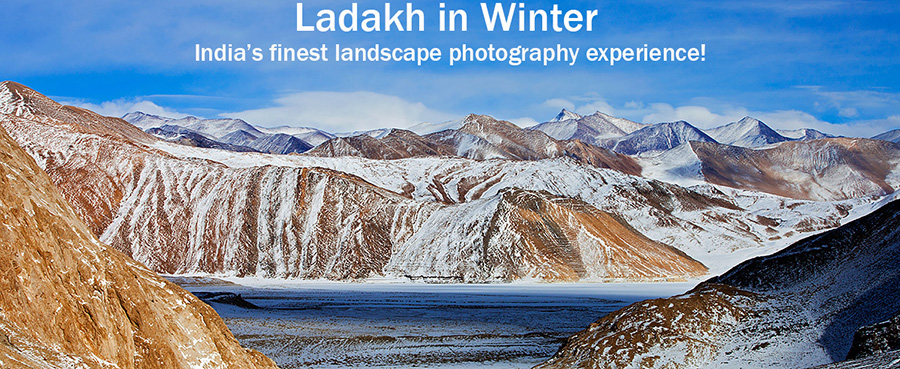
Here is a collection my images of winters in Ladakh, made over several visits in a span of about 7 years. Originally posted on medium.com – Winters in Ladakh — India’s ultimate landscape photography experience!

Powdery snow on the mountains over a frozen Pangong Tso Lake, in Ladakh during winters.
I first visited Ladakh exactly ten years ago. This was well before the region became every motor-cyclist’s ultimate destination, part of every traveller’s tick-off list and every holidaymaker’s check-in dream. In those days, tourists were in smaller numbers and Leh had more homes than guesthouses and hotels.
Every winter, we conduct a photography tour to see and capture the glorious landscapes of Ladakh. This is perhaps India’s ultimate landscape photography experience. Travel to the highlands of Ladakh in winter, when Ladakh is at its pristine best — with its snow-clad mountain landscapes, frozen lakes, resilient nomads with their herds of sheep and yaks and endless fields of snow. Explore photography on the roof of India on this mentored photography tour in a season when the earth is covered in a carpet of snow. See details and sign up today: A Snow-filled Winter in Ladakh — Photography Tour
The story is all different now. Ever since a block-buster Indian movie featured the landscapes of Ladakh eight years ago, it has become the go-to destination of hundreds of thousands of people every year. The region has been transformed from a quite mountainous escape to a bustling tourist town of German bakeries, pizza joints and mall-roads!
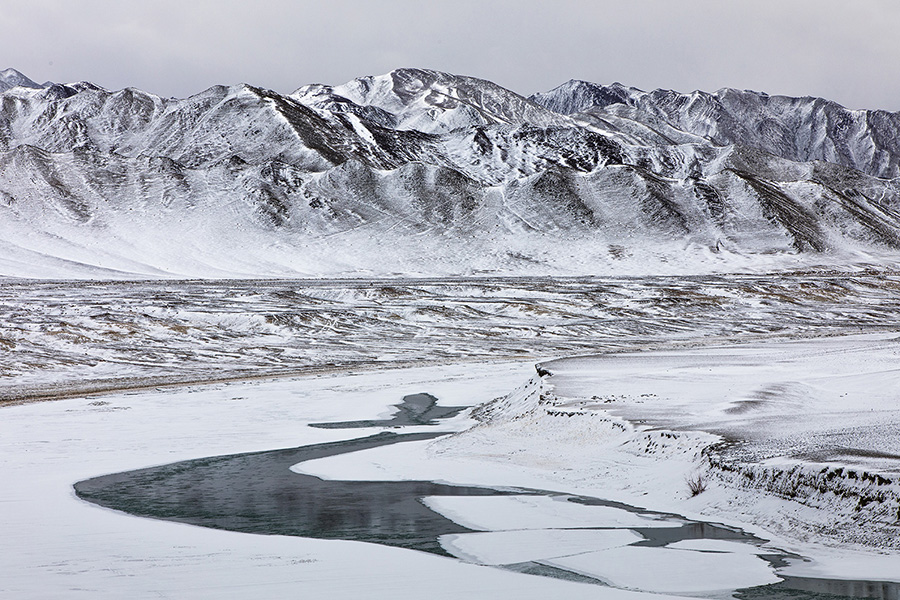
But all that ends when the summer season makes way to a cold frigid winter in Ladakh. After September, as the temperatures start falling rapidly, shutters are downed on the souvenir shops. Most hotels close for winter and taxi drivers stay home for a few months. But this is also the time when mountains are transformed through the magic of falling snow.
Regular readers have seen many images from Chandratal on this blog in the past. Here is another one from a recent trip.
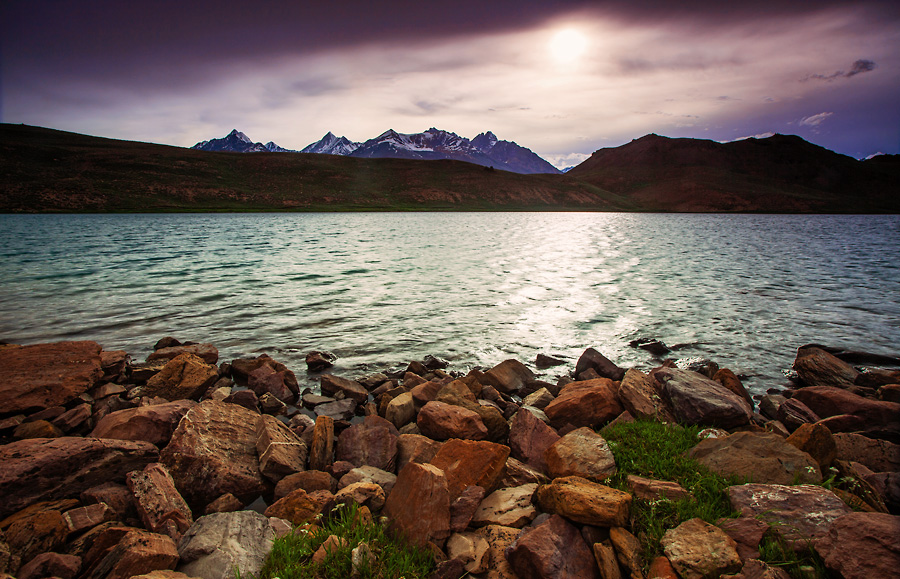
Chandratal Lake is a place I have been going to for a few years now. It’s a beautiful lake located in Lahaul & Spiti Region in the Himalayas. I made my fifth visit a few weeks ago.
The first few images at this place came easy. When the sun is shining and the air is still, the lake reflects everything within the view. It assumes the blue of the sky, and the reflection is so perfect that you can’t see the lake’s waters in a photograph.
Challenges, however, begin when you are done with easy-to-make images. It helps when the weather gods show different moods.
This time when I was there, it was windy and the lake surface was restless. There was a thin layer of cloud through which the sun was barely visible. Here is one of the resulting image.
I was exploring more on the photography opportunities in the area, and it appears that the place holds a promise. Perhaps the next time around, I will look at spending more time at the lake and the places around it.
I usually make two visits to Hampi every year. If there is one thing that I necessarily look forward to during every visit, it is the climb to Matanga Parvata to watch sunrise over the landscapes of this ancient city.
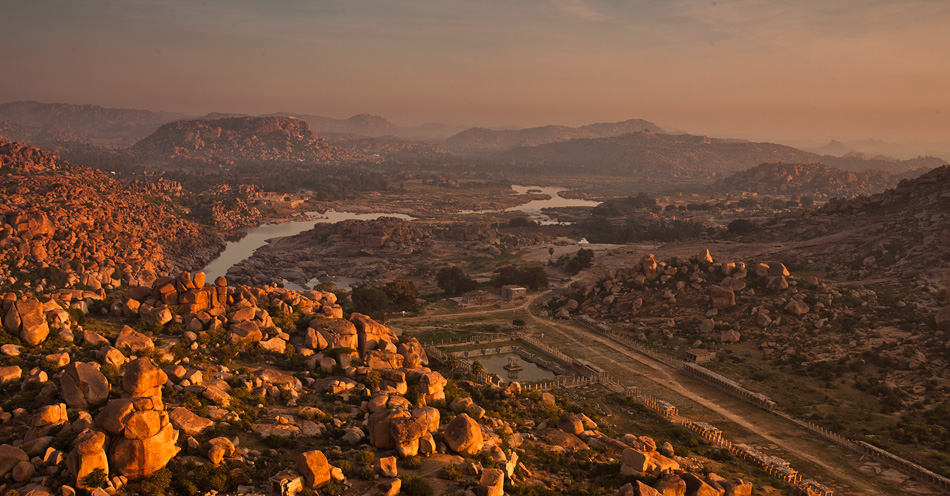
Matanga is perhaps the tallest hill in Hampi, on the right bank of Tungabhadra River. From the vantage point on the top, the sun rising over a misty landscape during the winter months highlights a wave of ridges that line up the eastern sky. As the big blob of light moves well above the hills, the golden lights sparkle on the smooth surface of the boulders littering the landscape. Tungabhadra shines in the skylight, with occasional coracles moving up and down on its calm surface.
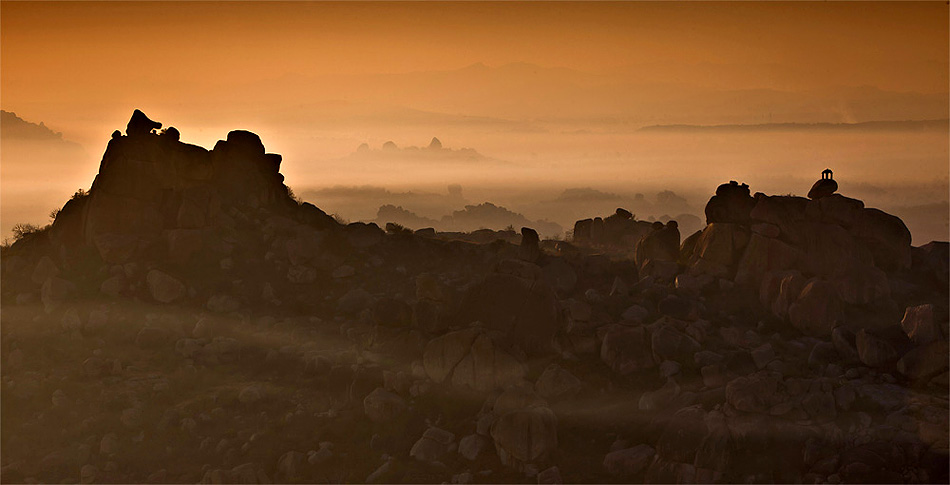
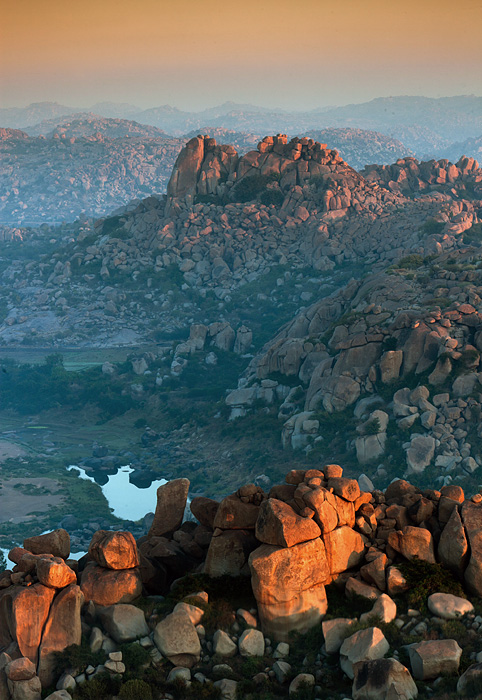
The steep fall of Matanga towards the east offers a bird’s-eye view of Achutaraya Temple right below and an uninterrupted view of the sunrise above. On the western side of the hill, the tall spire of Virupaksha Temple appears to challenge Matanga in its height. All around, remains of the erstwhile Vijayanagar Kingdom – Vijaya Vithala Temple, Krishna Temple, Lotus Mahal and several mantapas offer insights to the city’s past.
A little downstream, on the other side of the river, is Anjanadri Hill – a place of many legends. While Hampi’s hills are often credited to be the place where the kingdom of monkeys from Ramayana once existed, Anjanadri is known as the place where Hanumantha was born. The hill now houses a hoard of monkeys that usually settle around an Anjaneya Temple, as if to prove a point.
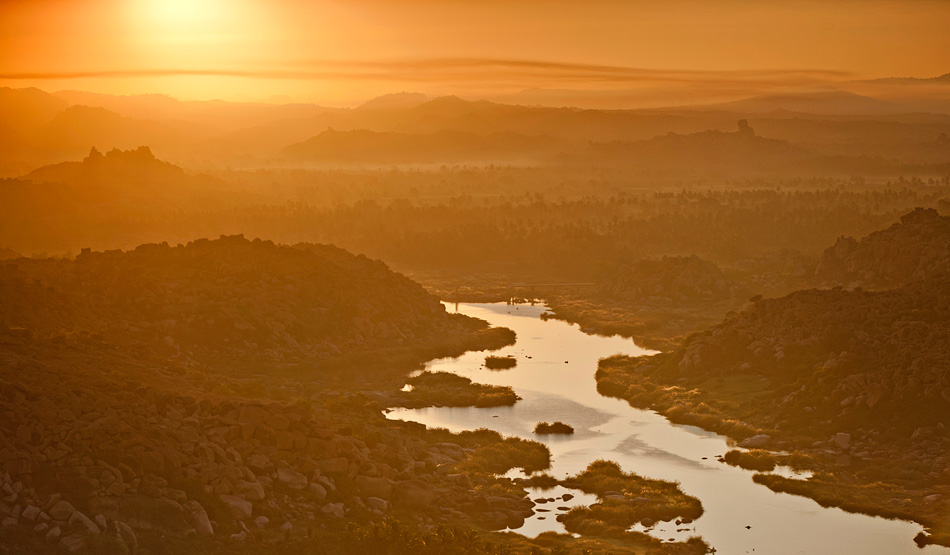
While Matanga is the highest point on the right bank, the Anjanadri probably takes the honour on the left bank. Near the base of Anjanadri, the river takes a steep turn from its northwardly flow to east, which allows a line-of-the-river view of sunrise from the hill top. In the winter months, the morning landscapes over the river appear bathed in gold – a spectacle that stays in the heart as permanently as it does in the camera.







